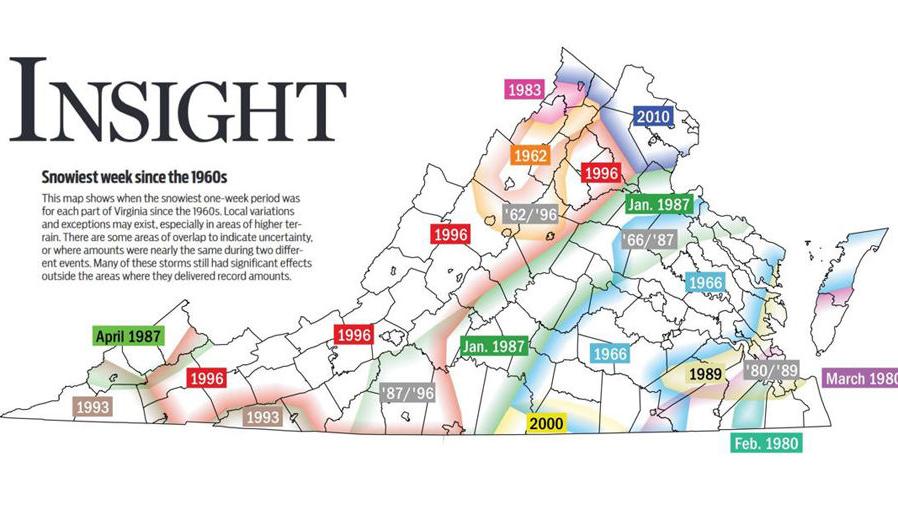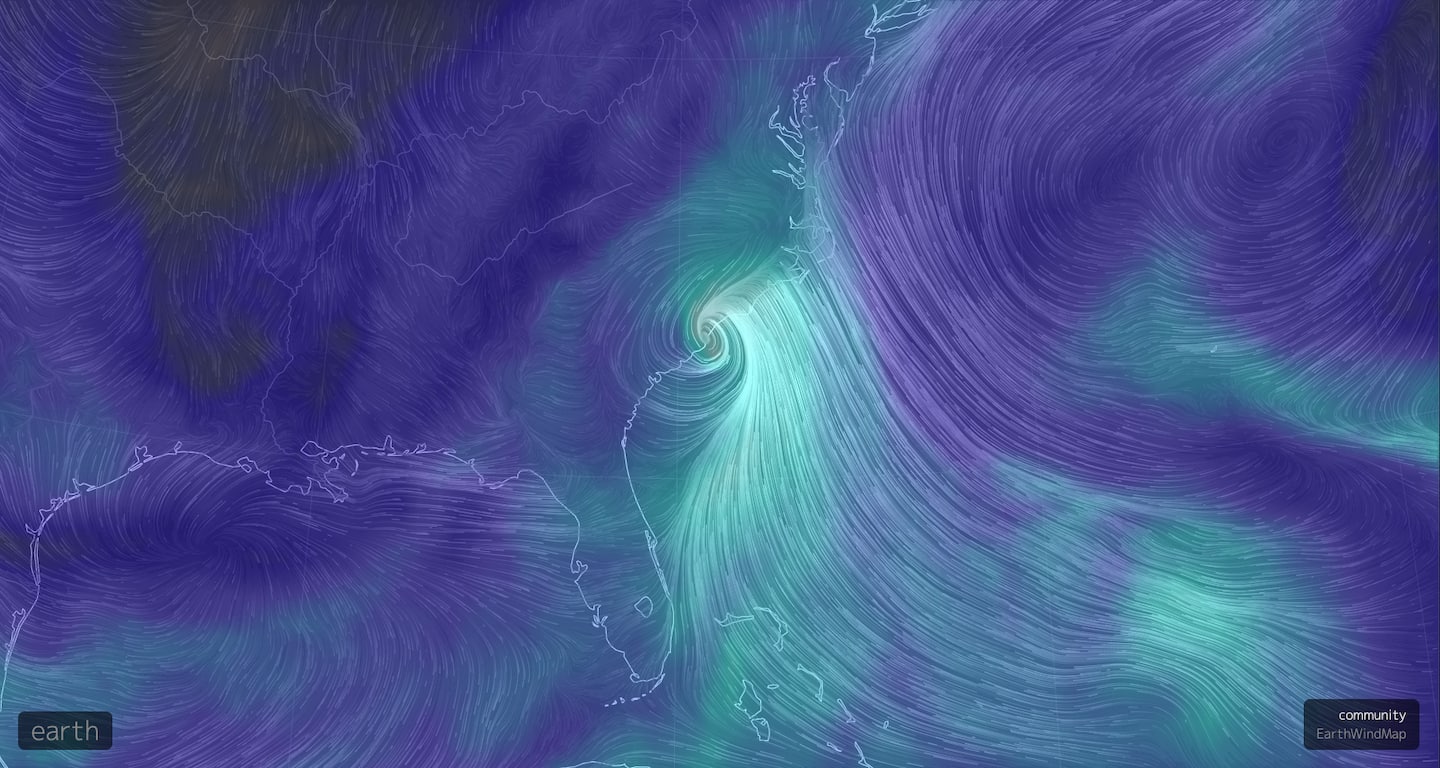Der Sturm peitschte an den Ufern zwischen Charleston, SC, und Morehead City, NC, wo er zu weit verbreiteten Stromausfällen, einer Überschwemmung der Küste von drei bis fünf Fuß in einigen Gebieten und starken Regenfällen führte, die bis zu acht Zoll erreichen konnten.
Als der Sturm gegen 23.10 Uhr in der Nähe von Ocean Isle Beach landete, erreichten die beobachteten Windböen im Küstengebiet von North Carolina südöstlich von Wilmington eine Geschwindigkeit von etwa 150 km / h. Eine Wetterstation in Oak Island, NC, meldete anhaltende Winde von 76 Meilen pro Stunde und eine Böe von 87 Meilen pro Stunde.
Der Sturm, der während seines Beinaheunfalls mit Florida ein tropischer Sturm gewesen war, erlangte wieder den Status eines Hurrikans, und seine maximal anhaltenden Winde stiegen auf 85 Meilen pro Stunde. In Myrtle Beach überschwemmte eine historisch große Sturmflut Straßen und Geschäfte, und im Südosten von North Carolina wurden mehrere Tornados gemeldet, von denen einige Schäden verursachten.
Der Sturm wird am Dienstag als nächstes in den mittelatlantischen Raum eindringen, wahrscheinlich als tropischer Sturm. Sturmfluten überschwemmen eine Bedrohung in den Gebieten Norfolk und Hampton Roads und ein windgepeitschter Regen von mehreren Zentimetern Regen von Richmond nach Philadelphia.
“Starke Regenfälle werden zu Sturzfluten und Überschwemmungen in der Stadt führen, von denen einige in den östlichen Carolinas und im mittleren Atlantik von Bedeutung sein können”, schrieb das National Hurricane Center.
Der Sturm wird dann in den Nordosten rasen und starken Regen, starken Wind und Überschwemmungen an der Küste von New York nach Maine auslösen. Die Winde könnten entlang der Jersey Shore nach New York City besonders stark sein, was zu möglicherweise weit verbreiteten Stromausfällen führen kann.
Hurrikan- und Tropensturmwarnungen verputzen die Ostküste von South Carolina nach Maine.
Am 2. August erklärte Matthew Cappucci von der Post, was Tropical Storm Isaias bisher für die Ostküste bedeutet hatte und wie es sich Anfang der Woche entwickeln könnte. (Die Washington Post)
Eine Hurrikanwarnung deckt die Zone nördlich von Charleston, SC, bis Surf City, NC, ab. Tropische Sturmwarnungen setzen sich im Norden fort und erstrecken sich von den North Carolina Outer Banks bis nach Maine, einschließlich Norfolk, der Chesapeake Bay, DC, Philadelphia, Küste New Jersey, New York City, Boston und Portland.
Zu den Gebieten, in denen ein besonderes Risiko für Sturmfluten besteht, gehören Myrtle Beach, SC, und Wilmington, NC, wo laut National Hurricane Center die Gefahr einer lebensbedrohlichen Überschwemmung entlang der Küste besteht. Ein gefährlicher Anstieg kann auch Gebiete von den North Carolina Outer Banks bis zu gefährdeten Gebieten im Virginia Tidewater betreffen.
Spitzenwindböen für Küstengebiete von Zentral-South Carolina bis Süd-Neu-England könnten 60 bis 80 Meilen pro Stunde erreichen, wenn Isaias sich am nächsten nähert, mit höheren Werten nahe der Grenze zwischen South Carolina und North Carolina. Dies kann zu umgestürzten Bäumen und Stromausfällen, herumfliegenden Trümmern und geringfügigen Schäden an einigen Strukturen führen. Da viele Menschen aufgrund der neuartigen Coronavirus-Pandemie von zu Hause aus arbeiten, können Stromausfälle am Dienstag und Dienstagabend vom gesamten Weg in die New Yorker U-Bahn-Region besonders störend sein.
Jesaja jetzt und seine Spur- und Intensitätsprognose
Am Montag um 23.10 Uhr befand sich der Hurrikan Isaias in der Nähe von Ocean Isle, NC, etwa 40 Meilen südwestlich von Wilmington, in nordnordöstlicher Richtung mit 22 Meilen pro Stunde. Der Sturm enthielt maximal anhaltende Winde von 85 Meilen pro Stunde, was ihn zu einem Hurrikan der Kategorie 1 machte. Eine Windböe von 150 km / h wurde am Montagabend an einer Wetterstation hoch oben auf dem Frying Pan Shoals Tower, 32 Meilen südöstlich von Bald Head Island, gemeldet. Das NC-Doppler-Radar maß Winde direkt vor der Oberfläche von mehr als 100 Meilen pro Stunde, als das Auge des Sturms fegte an Land.
Radar zeigte starke Regenbänder, die die Küste nördlich von Wilmington durchnässten und bereit waren, weiter nach Norden in Richtung Morehead City zu fegen.
Es gab Schadensmeldungen im Zusammenhang mit einem möglichen Tornado auf Bald Head Island südlich von Wilmington, unter anderem an der Küste von North Carolina.
Das Wasser stieg entlang der Küste nördlich von Charleston.
Der Wasserstand am Springmaid Pier in Myrtle Beach, SC, stieg am Montagabend auf mindestens 10,18 Fuß, mit einem Anstieg von etwa 4 Fuß über dem vorhergesagten Gezeitenpegel. Damit ist es nach dem Hurrikan Hugo im Jahr 1989 und dem Hurrikan Matthew im Jahr 2016 der dritthöchste Wasserstand seit Bestehen.
Während des Wochenendes kämpfte der Sturm in einer feindlichen Umgebung mit Winden, die mit unterschiedlichen Geschwindigkeiten und Richtungen wehten, und mit Höhen, die den inneren Kreislauf aus dem Gleichgewicht brachten, und trockener Luft, die die Gewitter unterdrückte, insbesondere auf der Westseite. Am Montag wurde Jesaja besser organisiert, als sich die Windscherung etwas zu entspannen begann und der Sturm langsam bis in die Nacht hinein an Stärke gewann.
Uhren und Warnungen
- Eine Hurrikanwarnung erstreckt sich vom South Santee River, SC, bis nach Surf City, NC
- Eine tropische Sturmwarnung erstreckt sich von nördlich von Surf City, NC, bis nach Eastport, Maine, einschließlich Martha’s Vineyard, Nantucket und Block Island. Es umfasst die Chesapeake Bay, den Tidal Potomac River, die Delaware Bay, den Long Island und Long Island Sound sowie die Pamlico und Albemarle Sounds.
- Städte einschließlich Norfolk; Washington; New York; New Haven, Conn.; Providence und Boston gehören zum Warngebiet für tropische Stürme.
- Eine tropische Sturmwache erstreckt sich von nördlich von Stonington nach Eastport, Maine.
- Eine Sturmflutwarnung deckt das Gebiet von South Santee River, SC, bis Cape Fear, NC ab. Eine Sturmflutwarnung wurde auch für Teile der Pamlico- und Albemarle-Sounds, einschließlich der Flüsse Neuse und Pamlico, sowie für die North Carolina Outer Banks ausgegeben vom Oregon Inlet bis zur Grenze zwischen North Carolina und Virginia.
Auswirkungen auf die Carolinas
Bis Montagabend wird sich Isaias voraussichtlich entlang der Grenze zwischen South Carolina und North Carolina mit oder nahe der Stärke eines Hurrikans bewegen.
Während es sich von Nord nach Nordost bewegt, drücken Winde an Land, die in Teilen der Küsten-Carolinas bis zu 90 Meilen pro Stunde wehen, Wasser an die Küste und häufen hohe Wellen auf der Sturmflut an.
Die größte Sturmflut wird nördlich des Zentrums erwartet, höchstwahrscheinlich in der Zone von Edisto Beach, SC, bis Cape Fear, NC, wo Wasseranstiege von drei bis fünf Fuß über dem Boden möglich sind, wenn die maximale Flut bei Flut auftritt . Entlang der North Carolina Outer Banks wird eine etwas geringere, aber immer noch gefährliche Sturmflut von zwei bis vier Fuß projiziert.
Gebiete, die für Überschwemmungen an der Küste anfällig sind, können beschädigt werden, insbesondere wenn der Höhepunkt des Sturms zum Zeitpunkt der Flut eintritt. Dies schließt Charleston, Myrtle Beach und Wilmington, NC ein
Die neueste Spur von Isaias gefährdet Gebiete nördlich von Charleston, einschließlich Wilmington, während der Nachtstunden mit den größten Überschwemmungen.
In einem weiten Gebiet der Carolinas, einschließlich der Gebiete im Landesinneren, prognostiziert der Wetterdienst drei bis sechs Zoll Regen und isolierte Mengen von acht Zoll. Wo der stärkste Regen fällt, können Blitz-, Fluss- und / oder städtische Überschwemmungen auftreten.
Zusätzlich zu den Gefahren von Wind, Sturmfluten und Regenfällen wird Isaias auch das Potenzial für Wasserspeier und Tornados darstellen, da die Windscherung innerhalb des Sturms dazu führt, dass sich einige einzelne Sturmzellen drehen.
Virginia nach Maine
Von Virginia Beach bis zur Küste von Maine sind zwischen dem späten Montag und Mittwoch von Süden nach Norden tropische Sturmbedingungen von Jesaja aus möglich. Dies kann sehr starke Regenfälle, Winde mit tropischer Sturmstärke, gefährliche Brandung und Überschwemmungen an der Küste umfassen.
Sogar Gebiete weit im Landesinneren von der Küste, einschließlich des Interstate 95-Korridors bis nach Westen bis zu den südlichen und zentralen Appalachen, werden voraussichtlich zwei bis sechs Zoll Regen mit vereinzelten Mengen von bis zu sechs bis acht Zoll erhalten.
Die extrem feuchte Luft, die von Jesaja nach Norden transportiert wird, wird auch mit einer Kaltfront interagieren, die einem sich nähernden Eintauchen in den Jetstream vorausgeht. Dies wird dazu beitragen, den Niederschlag zu fokussieren, und wird wahrscheinlich zumindest vereinzelte Überschwemmungsprobleme verursachen, insbesondere im mittleren Atlantik und entlang der Appalachen.
Im Virginia Tidewater, in der Chesapeake Bay und in der Delaware Bay wird eine Sturmflut von einem bis drei Fuß über dem normalerweise trockenen Land vorhergesagt, wenn sich der bis dahin schnell bewegende Sturm nach Norden bewegt. Ein ähnlicher Anstieg wird entlang der Jersey Shore in den Süden Neuenglands vorhergesagt.
Dieser Anstieg wird wahrscheinlich zu geringfügigen bis mittelschweren Überschwemmungen an der Küste in den Gebieten DC und Annapolis sowie zu gefährdeten Orten an der Küste von New Jersey und New York City führen. Das Ausmaß der Überschwemmung an der Küste hängt stark vom Zeitpunkt der stärksten Onshore-Winde ab und davon, ob sie mit der Flut in Einklang stehen.
In New York würde die prognostizierte Sturmflut zu geringfügigen Überschwemmungen im oberen Preissegment führen, wobei Wasser gegen die Spitze des Battery Park Seawall am südlichen Punkt von Manhattan fließt und Teile des FDR Drive überflutet.
Das Virginia Tidewater, die Delmarva Peninsula und die Küstengebiete des Nordostens werden wahrscheinlich Windböen zwischen 50 und 70 Meilen pro Stunde sehen. Es gibt Anzeichen dafür, dass sich das Windfeld des Sturms verstärken und ausdehnen könnte, wenn sich der Sturm aufgrund seines Übergangs in ein nichttropisches System von der Küste von Delaware nach Südengland bewegt.
“Es wird erwartet, dass Isaias am Dienstag weit verbreitete, anhaltende tropische Sturmwinde und Windböen an die Mittelatlantikküste bringt, was zu Baumschäden und Stromausfällen führen kann”, sagte das Hurricane Center.
Der Wetterdienst prognostiziert Windböen von 70 bis 75 Meilen pro Stunde entlang der Küste von New Jersey in den Westen von Long Island und New York City. Wenn diese Winde auftreten, können sie zu weit verbreiteten Stromausfällen führen. Es wird auch eine Gefahr für Tornados und Wasserspeier geben, insbesondere von Ost-Virginia nach New Jersey im Norden bis in Teile von Südengland, wenn die Gewitterböen des Sturms an Land kommen.
Sturmschutz während einer Pandemie
Die Coronavirus-Pandemie erschwert die Entscheidungen der örtlichen Notfallbeamten, die mit der Anordnung von Evakuierungen und der Eröffnung von Notunterkünften beauftragt sind, sowie der Bewohner, die möglicherweise gezwungen sind, diese zu nutzen.
Letzte Woche veröffentlichte die American Meteorological Society Leitlinien zum Schutz während der Pandemie und betonte: “Wenn Sie in einen Schutz evakuieren, sind Sie für Ihre Gesundheit verantwortlich.” In dem Dokument wird jedoch darauf hingewiesen, dass Staaten und Gemeinden, die Schutzräume eröffnen, unter anderem höchstwahrscheinlich für soziale Distanzierung und Maskennutzung sorgen werden.
Die Gesellschaft empfahl den Bewohnern, ihre eigenen sanitären Einrichtungen zu beschaffen und mitzubringen, und befolgte gleichzeitig die Empfehlungen der Zentren für die Kontrolle und Prävention von Krankheiten.
Die Federal Emergency Management Agency plant, sich in Bereichen, in denen sich das Coronavirus in der Gemeinschaft verbreitet, weniger auf eingesetzte Feldteams zu verlassen, sondern Schadensersatzansprüche aus der Ferne zu bearbeiten. Darüber hinaus ermutigen Sturmplanungsdokumente die Beamten, in Erwägung zu ziehen, diejenigen, die nicht anfällig für Sturmfluten oder andere Überschwemmungen sind, in Schutz zu bringen.
Im Juli zu ‘Ich’: Jesaja in historischer Perspektive
Jesaja wurde der neunte benannte Atlantiksturm von 2020, der sich normalerweise erst Anfang Oktober entwickelt. Es ist der früheste „I“ -Sturm, der seit mehr als einer Woche verzeichnet wurde, und der letzte Dominostein, der in einer Saison gestürzt ist, in der auch die frühesten C-, E-, F- und G-Stürme im Atlantik verzeichnet wurden – Cristobal, Edouard, Fay und Gonzalo. Einschließlich Isaias hat 2020 im Juli fünf benannte Stürme hervorgebracht, die mit 2005 am meisten verzeichnet wurden.
Es ist das erste Mal, dass in der letzten Juliwoche zwei Hurrikane (Isaias und Hanna) im Atlantik aufgetreten sind.
Matthew Cappucci hat zu diesem Bericht beigetragen.








